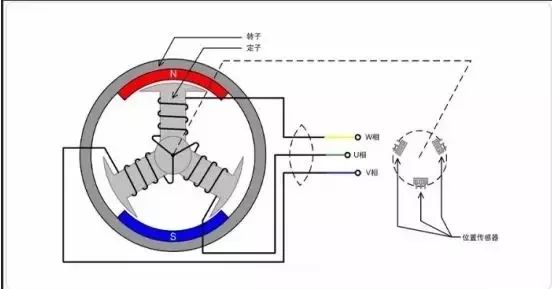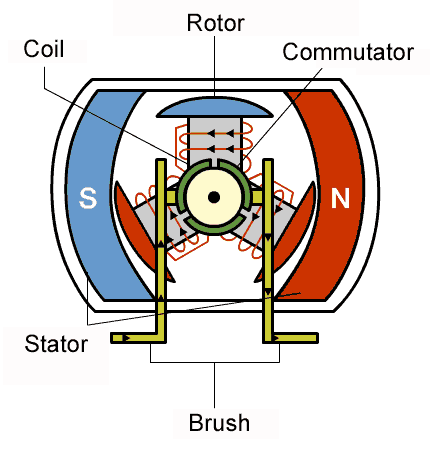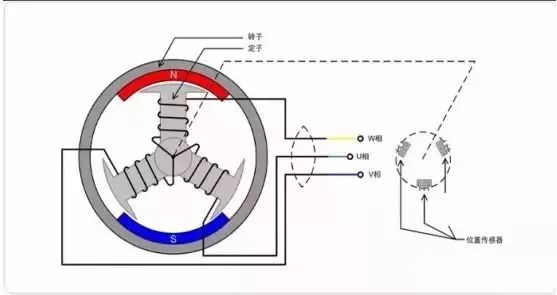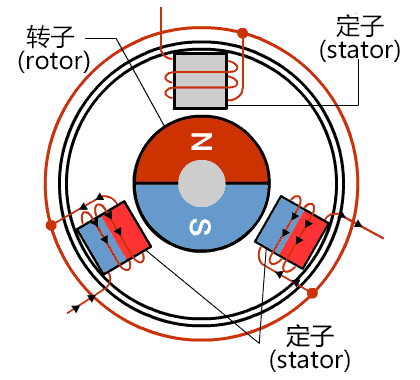Si vous magasinez pour un moteur électrique, vous avez peut-être rencontré les termes “brossé” et “sans balais” et je me demandais ce qu'ils voulaient dire. Ces termes font référence à la manière dont le moteur est alimenté et contrôlé., et comprendre les différences entre eux peut vous aider à choisir le moteur adapté à vos besoins.
Les moteurs à balais sont le type de moteur électrique le plus courant, et on les retrouve dans une grande variété d'appareils ménagers et industriels. Ces moteurs utilisent un jeu de balais pour transférer l'électricité au rotor, quelle est la partie mobile du moteur. Les brosses sont constituées d'un matériau conducteur, comme le carbone, et ils sont en contact avec le rotor via un ensemble d'anneaux de collecteur.
L'un des principaux avantages des moteurs à balais est leur simplicité et leur faible coût.. Ils sont relativement faciles à fabriquer et à entretenir, et ils peuvent être trouvés dans un large éventail d'applications. Cependant, ils ont certaines limites. Par exemple, les pinceaux peuvent s'user avec le temps, conduisant à des performances réduites et à une durée de vie plus courte. En outre, les moteurs à balais ont tendance à produire plus de bruit électrique que les moteurs sans balais, ce qui peut être un souci dans certaines applications.
Laissez-moi vous montrer comment ça marche

 Moteurs sans balais, d'autre part, utiliser des commandes électroniques pour alimenter le rotor, plutôt que des pinceaux. Cela signifie qu'il n'y a aucun point de contact physique entre le rotor et la source d'alimentation., ce qui peut conduire à une efficacité améliorée et à une durée de vie plus longue. Les moteurs sans balais sont souvent utilisés dans les applications hautes performances, comme les véhicules électriques et les drones, où l'efficacité et la fiabilité sont essentielles.
Moteurs sans balais, d'autre part, utiliser des commandes électroniques pour alimenter le rotor, plutôt que des pinceaux. Cela signifie qu'il n'y a aucun point de contact physique entre le rotor et la source d'alimentation., ce qui peut conduire à une efficacité améliorée et à une durée de vie plus longue. Les moteurs sans balais sont souvent utilisés dans les applications hautes performances, comme les véhicules électriques et les drones, où l'efficacité et la fiabilité sont essentielles.

Le moteur est principalement composé d'un stator en matériau magnétique permanent, un rotor (armature) enroulé avec un enroulement en bobine, un collecteur, et des pinceaux. Tant qu'un certain courant continu est appliqué aux extrémités A et B de la brosse, le collecteur du moteur changera automatiquement la direction du champ magnétique du rotor du moteur, pour que le rotor du moteur à courant continu continue à fonctionner.

L’un des principaux inconvénients des moteurs brushless est leur coût.. Ils sont généralement plus chers à fabriquer que les moteurs à balais, et ils nécessitent des contrôles électroniques plus complexes. Cependant, les performances et la fiabilité améliorées des moteurs sans balais peuvent souvent compenser ce coût supplémentaire à long terme.
En résumé, les moteurs avec et sans balais sont deux types différents de moteurs électriques qui utilisent différentes méthodes d'alimentation et de contrôle du rotor. Les moteurs à balais sont simples et peu coûteux, mais ils peuvent produire plus de bruit et avoir une durée de vie plus courte. Les moteurs sans balais sont plus chers, mais ils offrent une efficacité et une fiabilité améliorées. Comprendre les différences entre ces deux types de moteurs peut vous aider à choisir celui qui convient le mieux à vos besoins..
 Fabricant de dépoussiéreurs électriques en Chine – Kinzir
Fabricant de dépoussiéreurs électriques en Chine – Kinzir